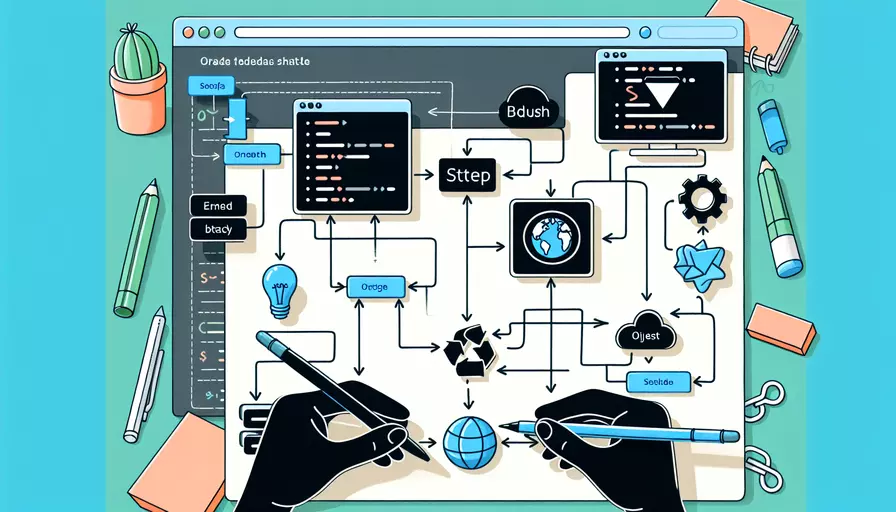
在Vue中,可以通过以下3种主要方法将对象传递给后端:1、使用Axios发送POST请求,2、使用Fetch API发送POST请求,3、使用表单提交对象数据。每种方法都有其独特的优势和使用场景。下面将详细介绍这些方法及其具体实现步骤。
一、使用Axios发送POST请求
Axios是一个基于Promise的HTTP库,可以用于在浏览器和Node.js中发送HTTP请求。它具有良好的兼容性和易用性。
-
安装Axios
npm install axios -
在组件中使用Axios
import axios from 'axios';export default {
data() {
return {
user: {
name: 'John Doe',
email: 'john.doe@example.com'
}
};
},
methods: {
sendUserData() {
axios.post('https://example.com/api/users', this.user)
.then(response => {
console.log('Data sent successfully:', response.data);
})
.catch(error => {
console.error('Error sending data:', error);
});
}
}
};
解释:
- 安装Axios:首先需要通过NPM安装Axios库。
- 在组件中使用Axios:在Vue组件中导入Axios,然后通过POST请求将对象数据发送到后端。
二、使用Fetch API发送POST请求
Fetch API是现代浏览器中内置的用于发送HTTP请求的接口,具有灵活性和强大的功能。
- 在组件中使用Fetch API
export default {data() {
return {
user: {
name: 'Jane Doe',
email: 'jane.doe@example.com'
}
};
},
methods: {
sendUserData() {
fetch('https://example.com/api/users', {
method: 'POST',
headers: {
'Content-Type': 'application/json'
},
body: JSON.stringify(this.user)
})
.then(response => response.json())
.then(data => {
console.log('Data sent successfully:', data);
})
.catch(error => {
console.error('Error sending data:', error);
});
}
}
};
解释:
- 在组件中使用Fetch API:通过Fetch API发送POST请求,将对象数据转换为JSON字符串,并设置请求头的Content-Type为'application/json'。
三、使用表单提交对象数据
有时需要通过表单提交的方式发送对象数据,通常用于文件上传或表单数据处理。
-
在模板中创建表单
<template><form @submit.prevent="sendUserData">
<input type="text" v-model="user.name" placeholder="Name">
<input type="email" v-model="user.email" placeholder="Email">
<button type="submit">Submit</button>
</form>
</template>
-
在组件中处理表单提交
export default {data() {
return {
user: {
name: '',
email: ''
}
};
},
methods: {
sendUserData() {
const formData = new FormData();
formData.append('name', this.user.name);
formData.append('email', this.user.email);
fetch('https://example.com/api/users', {
method: 'POST',
body: formData
})
.then(response => response.json())
.then(data => {
console.log('Data sent successfully:', data);
})
.catch(error => {
console.error('Error sending data:', error);
});
}
}
};
解释:
- 在模板中创建表单:通过Vue模板创建一个表单,使用v-model绑定表单数据。
- 在组件中处理表单提交:在表单提交方法中,使用FormData对象封装数据,并通过Fetch API发送POST请求。
总结
在Vue中,传递对象数据给后端主要有3种方法:使用Axios发送POST请求、使用Fetch API发送POST请求以及使用表单提交对象数据。每种方法都有其独特的优势和适用场景。通过Axios和Fetch API可以方便地处理复杂的请求头和数据格式,而通过表单提交则适用于文件上传和简单表单数据处理。希望本文能帮助你更好地理解和应用这些方法。
进一步建议:
- 根据项目需求选择合适的传输方法。
- 确保后端能够正确解析接收到的数据格式。
- 对于敏感数据,考虑使用HTTPS进行加密传输,保证数据安全。
相关问答FAQs:
1. Vue如何将对象传递给后端?
在Vue中,可以使用Ajax或者Fetch等技术将对象传递给后端。下面是一个示例代码:
// 在Vue组件中定义一个对象
data() {
return {
myObject: {
name: 'John',
age: 25,
email: 'john@example.com'
}
}
},
methods: {
sendData() {
// 使用Axios库发送POST请求
axios.post('/api/endpoint', this.myObject)
.then(response => {
console.log(response.data);
})
.catch(error => {
console.log(error);
});
}
}
在上面的代码中,我们定义了一个名为myObject的对象,它包含了name、age和email属性。在sendData方法中,我们使用Axios库发送一个POST请求,将myObject对象作为请求体发送到后端的/api/endpoint接口。后端可以通过解析请求体来获取这个对象。
2. 如何在Vue中将对象以JSON格式传递给后端?
在Vue中,可以使用JSON.stringify()方法将对象转换为JSON格式的字符串,然后将其作为请求体发送给后端。下面是一个示例代码:
methods: {
sendData() {
// 将对象转换为JSON字符串
let jsonString = JSON.stringify(this.myObject);
// 使用Axios库发送POST请求
axios.post('/api/endpoint', jsonString, {
headers: {
'Content-Type': 'application/json'
}
})
.then(response => {
console.log(response.data);
})
.catch(error => {
console.log(error);
});
}
}
在上面的代码中,我们使用JSON.stringify()方法将myObject对象转换为JSON字符串。然后,我们在Axios请求中设置了Content-Type头为application/json,这样后端就知道请求体是JSON格式的数据。后端可以通过解析请求体中的JSON字符串来获取这个对象。
3. Vue如何将带有嵌套对象的数据传递给后端?
在Vue中,可以使用嵌套对象来表示复杂的数据结构,并将其传递给后端。下面是一个示例代码:
data() {
return {
myObject: {
name: 'John',
age: 25,
email: 'john@example.com',
address: {
street: '123 Main St',
city: 'New York',
state: 'NY'
}
}
}
},
methods: {
sendData() {
// 使用Axios库发送POST请求
axios.post('/api/endpoint', this.myObject)
.then(response => {
console.log(response.data);
})
.catch(error => {
console.log(error);
});
}
}
在上面的代码中,我们定义了一个带有嵌套对象的myObject对象。它包含了name、age和email属性,以及一个嵌套的address对象,包含了street、city和state属性。在sendData方法中,我们使用Axios库发送一个POST请求,将myObject对象作为请求体发送到后端的/api/endpoint接口。后端可以通过解析请求体来获取这个带有嵌套对象的数据。
文章标题:vue如何给后端传对象,发布者:worktile,转载请注明出处:https://worktile.com/kb/p/3656112

 微信扫一扫
微信扫一扫  支付宝扫一扫
支付宝扫一扫 